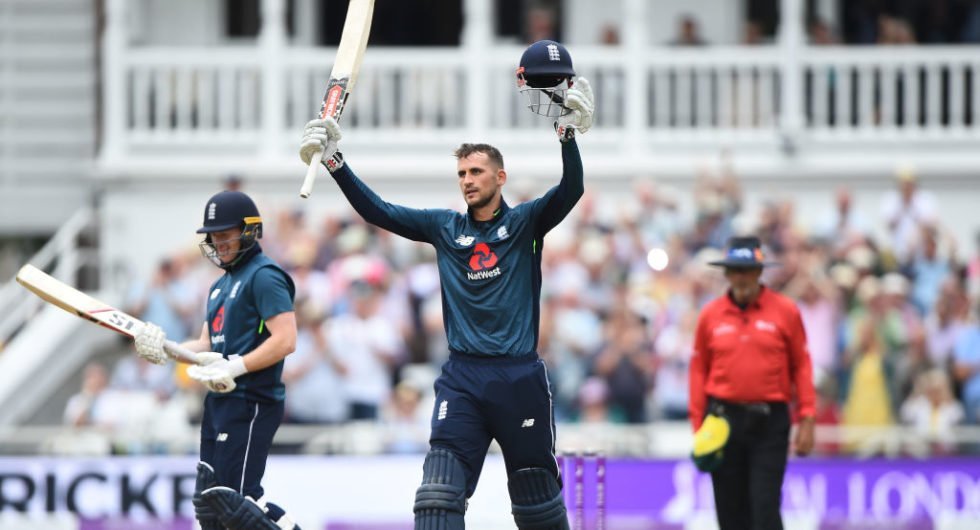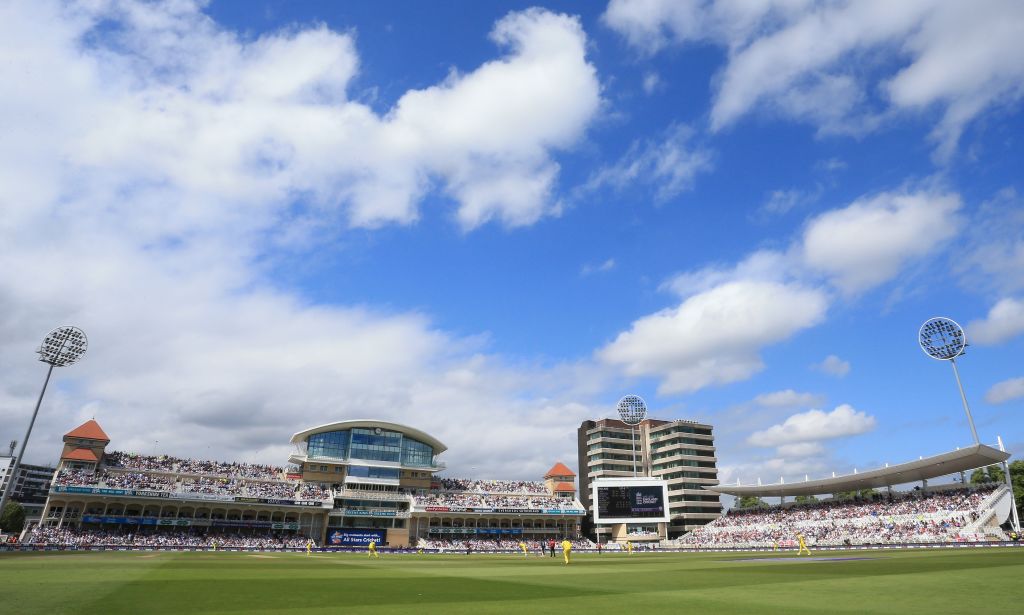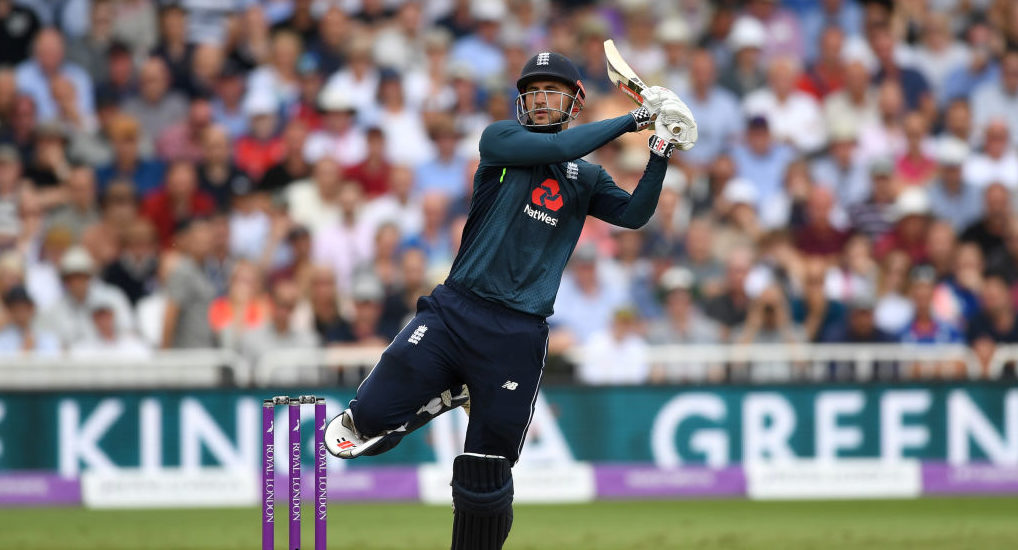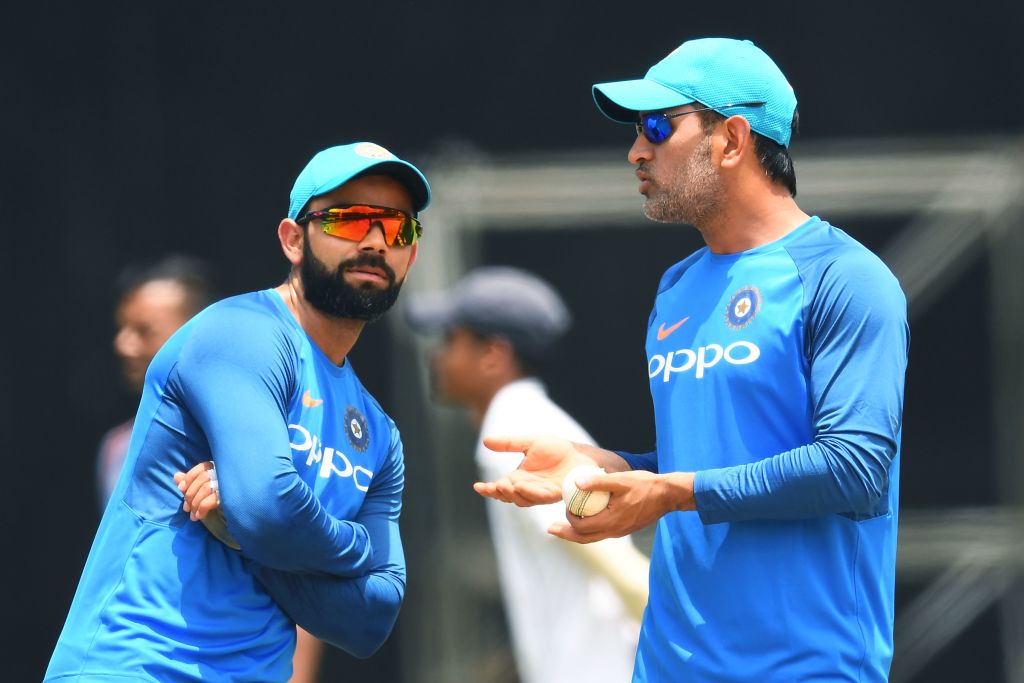How Trent Bridge became England’s record-breaking home of the run-fest

 by Scott Oliver
by Scott Oliver
@reverse_sweeper 15 minute read
With the world’s two best ODI sides set to begin their three-match series in Nottingham, Scott Oliver explores the phenomenon of England’s recent run-heavy record at the ground.
The visits of England’s power-hitting Golden Generation to Trent Bridge are increasingly starting to evoke The Fast Show’s 13th Duke of Wybourne: Us? Here? With our reputation?
In the five ODIs at Trent Bridge since England’s post-World Cup makeover – or rather, white-ball personality transplant – they have chased down 350 against New Zealand with six overs to spare, had a relatively sedate 286-apiece tie with Sri Lanka, then twice broken the world record, scoring 445 against Pakistan and a mammoth 480 last month against Australia. West Indies can consider themselves lucky their ODI at the venue last year was abandoned.
These games have produced the second, third and fourth highest ODI match aggregates ever in England, with only the 763-run blitz at the Oval against New Zealand in 2015 – the third highest in all ODIs – eclipsing them (and had Pakistan or Australia made a better fist of their admittedly daunting chases, that record would surely have tumbled, too).
Consequently, of all grounds that have hosted at least two ODIs since the last World Cup, none has seen a higher overall runs per over (RPO) figure than Trent Bridge’s 7.26. It thus comes as no surprise that the highest strike-rate in any innings by an England batsman in ODIs was at Trent Bridge – Jos Buttler’s 293.77 (47* from 16 balls) against the Black Caps in 2013 – while, for innings over 50, the two highest strike-rates were also both in Nottingham, these being Eoin Morgan’s cameos in the two world records: 67 off 30 (223.33) versus Australia, and 57* off 27 (211.11) against Pakistan.
Nottingham may lack the thin air of the High Veldt, but with cricket balls sent into the stands with brutal regularity, it’s fast becoming England’s Johannesburg: the place for team and individual records to be broken, for batsmen to boldly go where no batsmen have gone before.

Trent Bridge: England’s run-fest heaven
The general reasons for this trend are by now fairly well documented: tweaks to the fielding restriction rules designed to overcome the Boring Middle Overs; two new balls that remain hard and rarely scuff up for reverse swing; and, chiefly, the ‘trickle-up’ effect of Twenty20, both technically (the addition of new shots to batsmen’s repertoire) and psychologically (re-writing the idea of what scores are possible), not to mention the eco-systemic effect of incentivising players to tool themselves up, in the gym and the nets, for big franchise pay days.
As for the specifics, Trent Bridge’s record-breaking batting feats are partly enabled by a delightfully odd-shaped ground that’s reminiscent, appositely, of a baseball field. But at the centre of it all – both literally and metaphorically – is a pitch that’s truer than the Pope sitting a polygraph. Indeed, in amongst the recent ODI carnage was the highest ever domestic List A match aggregate of 870 (two runs shy of the ‘435 game’ in Johannesburg), with Northants’ gallant pursuit of Notts’ 444 finishing just 18 short, with 10 balls unused. Two days later, Notts contributed 415 to the ninth highest all-time List A match aggregate of 794 against Warwickshire.

Nottinghamshire’s Alex Hales enjoyed England’s record-breaking 480
It’s quite the turnaround when you consider the last time India were in Nottingham to play a Test match, groundsman Steve Birks was widely pilloried for producing a turgid, paceless strip that was rated “poor” and of “an unacceptable standard for Test cricket” by the ICC – a pitch on which the two first innings’ tenth-wicket partnerships were 111 and a world record 198, James Anderson (un)memorably scoring a career-best 81.
The last time India were at Trent Bridge for an ODI, on that same 2014 tour, two of the home team’s top three batting spots were occupied by AN Cook (career strike-rate 77.13) and Ian Bell (77.16). This time, it’s feasible that there could be no room for Joe Root. The game has indeed moved on, with the ECB and Eoin Morgan taking a long, hard whiff of the coffee after the World Cup debacle, and not only dragging English white-ball cricket, belatedly, into the 21st century, but also becoming ODI batting’s state of the art, the most feared line-up in world cricket. Except, perhaps, for India – a team packed with bold and dynamic shotmakers, battle-hardened in the IPL furnace, and inspirationally led by an all-surfaces, all-formats behemoth in Virat Kohli, arguably the ODI GOAT.

Will India’s champions inspire England to even greater feats?
All of which makes you wonder quite what deeds Thursday’s ODI series opener at Trent Bridge might have in store, with two adventurous rivals at the top of their games potentially spurring each other to previously unimaginable heights. It promises to be a toe-to-toe slugfest. Marvin Hagler versus Tommy Hearns. We might even see the first 500 total, or perhaps the first 900-run game. Maybe an England player will join the three Indians in the 200 Club – one of whom, Rohit Sharma, has of course done it three times, including a world record 264 against Sri Lanka in Kolkata in 2014.
A note of caution, though, before expectations get a little too giddy. First, there have only ever been two 800-plus-run games: that match in Jo’burg in 2006, and an astonishing game in Rajkot in 2009, when Sri Lanka fell three runs short in pursuit of India’s 414. Second, India’s ice-veined wrist-spinners will have a sizeable say in matters (although a returning Ben Stokes may fancy that slog-sweepable cut-off corner in front of the New Stand).
Nevertheless, records or not, the smart money is on a runfest, although such games have their detractors. Just as the ‘435 game’ was seen by some as an abomination of what cricket should be – Barry Richards said at the time that “the skill has been taken out of cricket” – so a few in the Sky commentary box were muttering during England’s 480 against Australia that conditions were too punitive for the bowlers and that cricket should strive for the mystical “even contest between bat and ball”. Well, yes and no.
Imagine, for argument’s sake, you set the figure at 300 for an ODI. Do you really want every game hovering around that mark? Wouldn’t that be the greater sin of homogenisation? Surely, you want variety not standardisation. The point is that the balance of bat and ball – insofar as this value can ever be properly calibrated – should be across a series, not identical from game to game. Just as a slow, grabby pitch and a tense 210-ish game can be thrilling, so too can 400 apiece. Sure, you wouldn’t want five ‘Trent Bridges’ in an ODI series – that would be overkill, maybe overdose – but why not have one game each series where the teams just strap in and floor it from ball one?
Such matches are fast becoming Trent Bridge’s USP. And – whisper it – maybe it’s what the public want to see. At least, some of the time.

